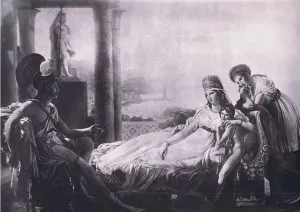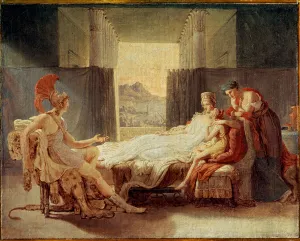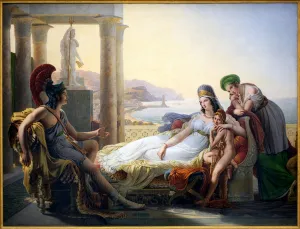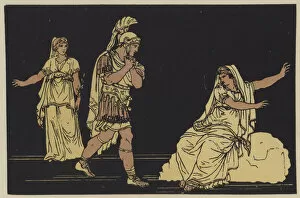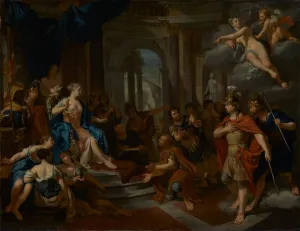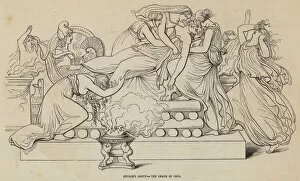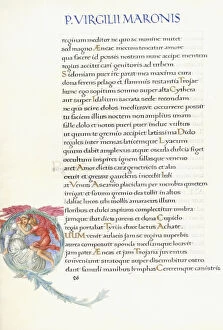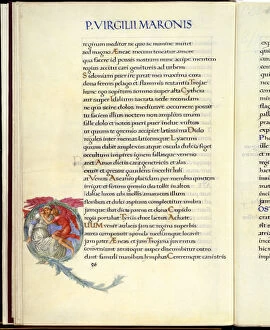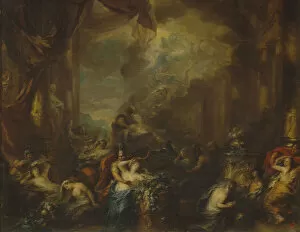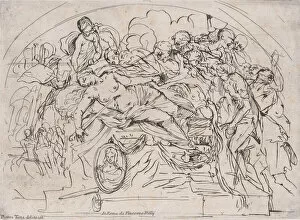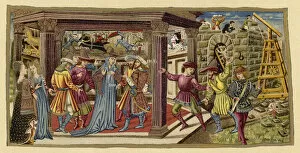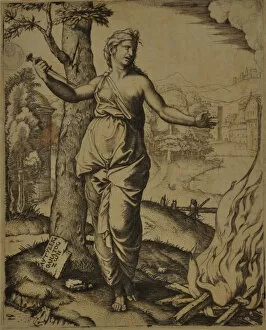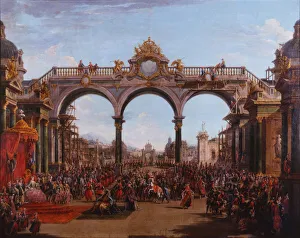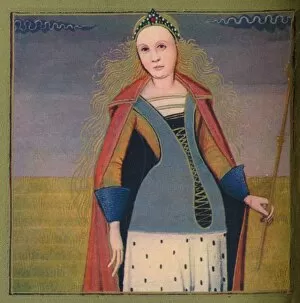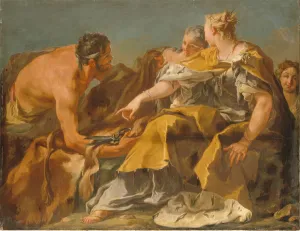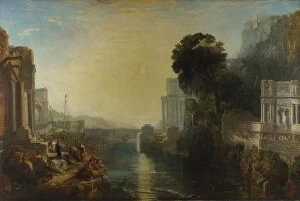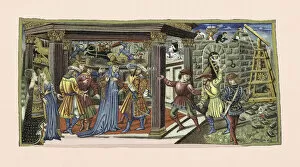Dido Collection (page 2)
"Dido: A Tragic Tale of Love, Betrayal, and Self-Destruction" In the epic poem "The Aeneid" by Virgil, Dido's story unfolds with heart-wrenching intensity
All Professionally Made to Order for Quick Shipping
"Dido: A Tragic Tale of Love, Betrayal, and Self-Destruction" In the epic poem "The Aeneid" by Virgil, Dido's story unfolds with heart-wrenching intensity. She is depicted in various artworks throughout history, each capturing a different moment of her tragic fate. One such artwork portrays Dido on the Funeral Pyre, as described in Virgil's text. The image showcases her anguish and despair as she prepares to end her life after being abandoned by Aeneas. Marcantonio Raimondi's depiction from 1510 captures the raw emotion on Dido's face as she holds a dagger in her right hand while reaching out with her left arm. Another haunting portrayal shows Dido stabbing herself at the opening of Book IV of "The Aeneid. " This watercolor painting on vellum evokes a sense of finality and desperation as she takes control over her own destiny. Louis Marin Bonnet's mid to late 18th-century rendition depicts a sorrowful Dido who has been forsaken by Aeneas. Her pained expression reflects the depths of her heartbreak and betrayal. Diamantini's artwork from 1650-1700 presents an elaborate scene where many figures surround Dido reclining on a pyre. It captures both the grandeur and tragedy surrounding her suicide. Henry Fuseli's sketch from 1781 offers an intriguing perspective with its recto-verso composition. On one side, we see his interpretation on the Funeral Pyre; on the other side lies an erotic sketch that adds another layer to this complex character. Throughout these depictions, one theme remains constant – love lost and its devastating consequences. Whether it be through abandonment or betrayal, Dido finds herself consumed by grief until ultimately choosing death over living without love. Her story serves as a cautionary tale about unchecked passion and the destructive power of unrequited love.




